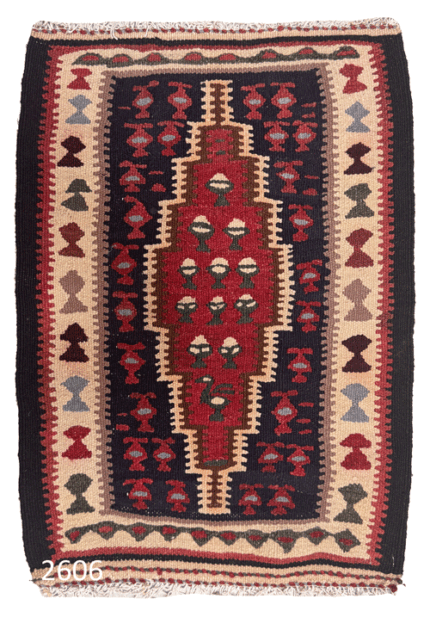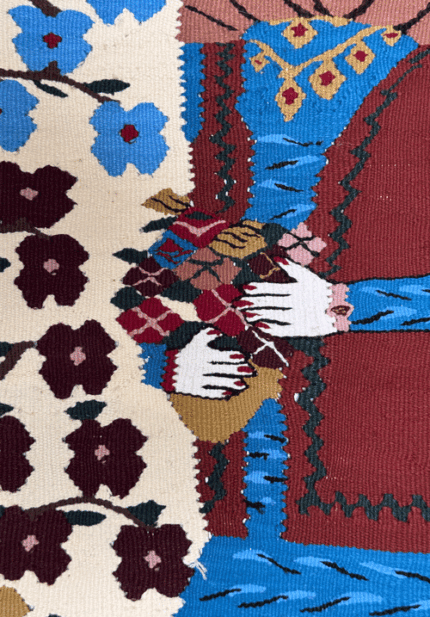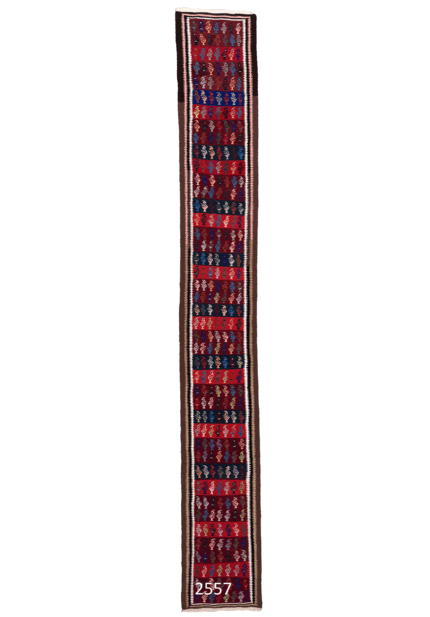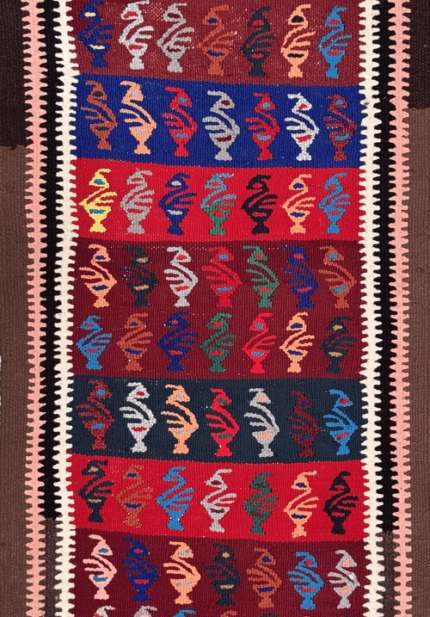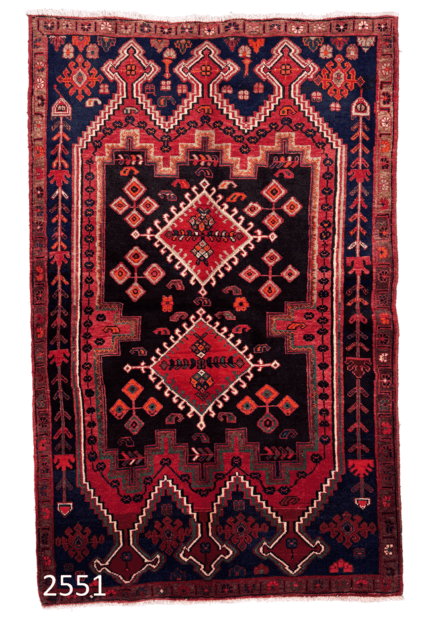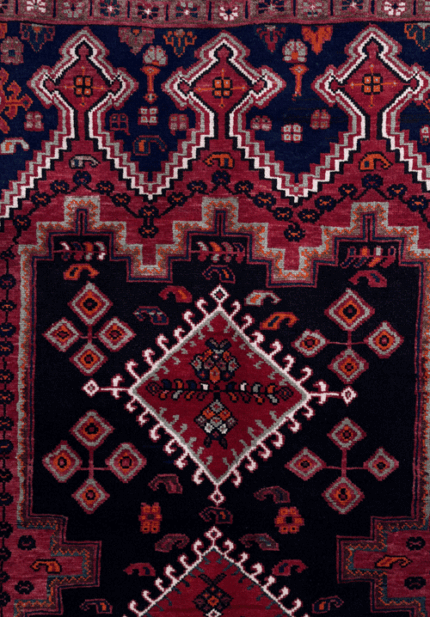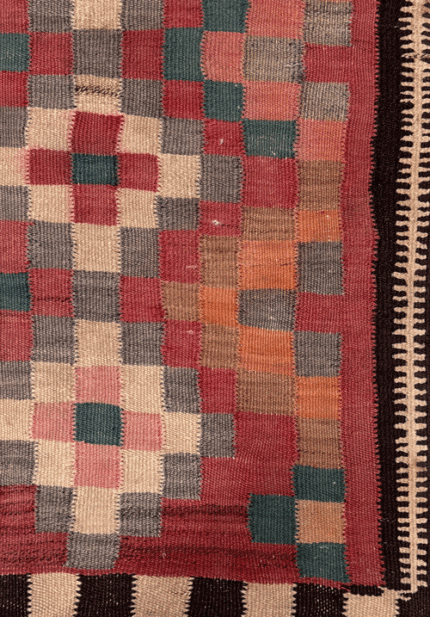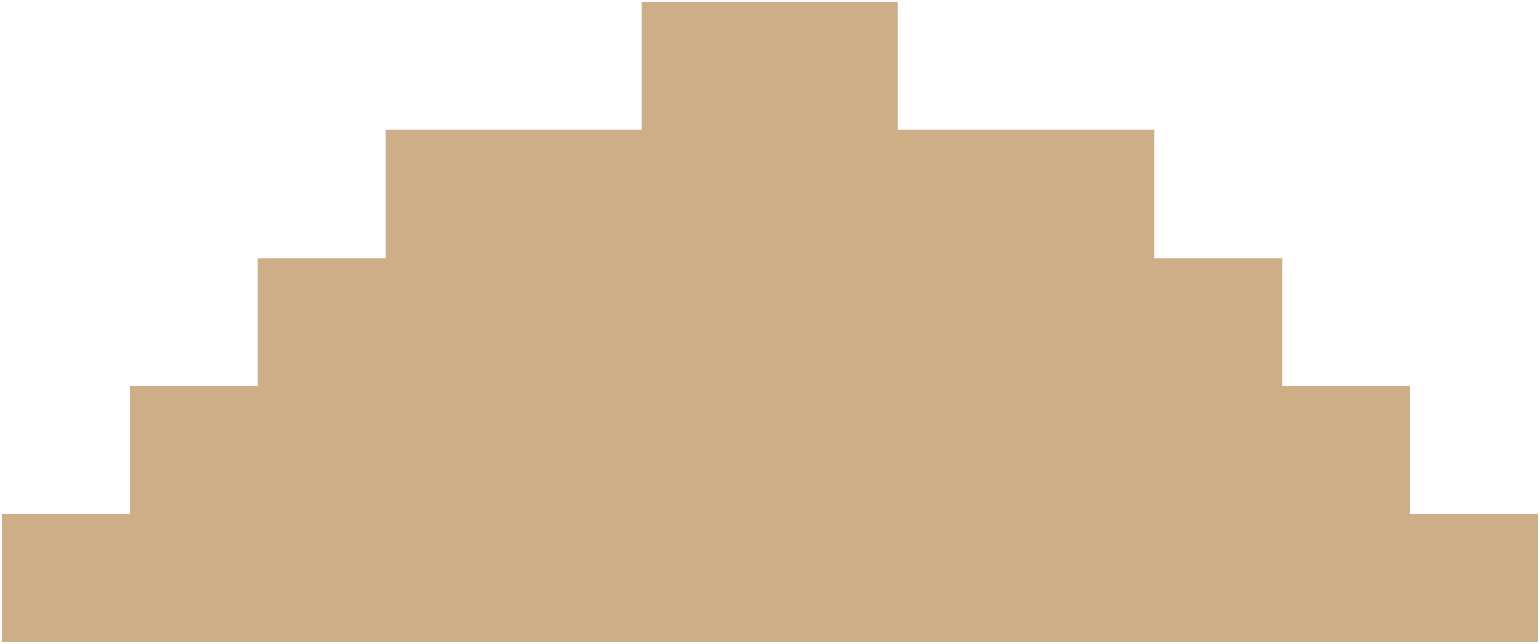Lak
Showing 1–12 of 154 resultsSorted by latest
Harsin Kilims: The Duck Motifs and Symmetry of Iran’s Lak Weaving Heartland
Just 40 kilometers from Kermanshah in western Iran, the small town of Harsin is widely regarded as one of the most important centers of Persian kilim weaving. With deep historical roots, Harsin is inhabited entirely by the Lak people, an ethnic group with a recognized language closely related to Kurdish, and a distinctive cultural identity that sets their woven art apart.
Harsin kilims are best known for their intricate use of the duck motif, a repeating symbolic form woven with remarkable symmetry and pattern density. Another hallmark is the “Reshteleh”, a comb-like linear element used to divide design sections. These kilims are notable for their precision, despite being woven without a pre-drawn pattern, and typically appear in narrow, elongated formats—ideal as runners or decorative wall textiles.
About 35 kilometers away lies Delfan, another town inhabited by Lak communities. While Delfan kilims share similar weaving roots, they are freer in layout, featuring less dense patterns, asymmetrical duck motifs, and softer-spun wool. Together, the kilims of Harsin and Delfan form a striking chapter in the story of tribal Persian flatweaves, reflecting both a shared heritage and the subtle regional expressions of Lak artistry.



